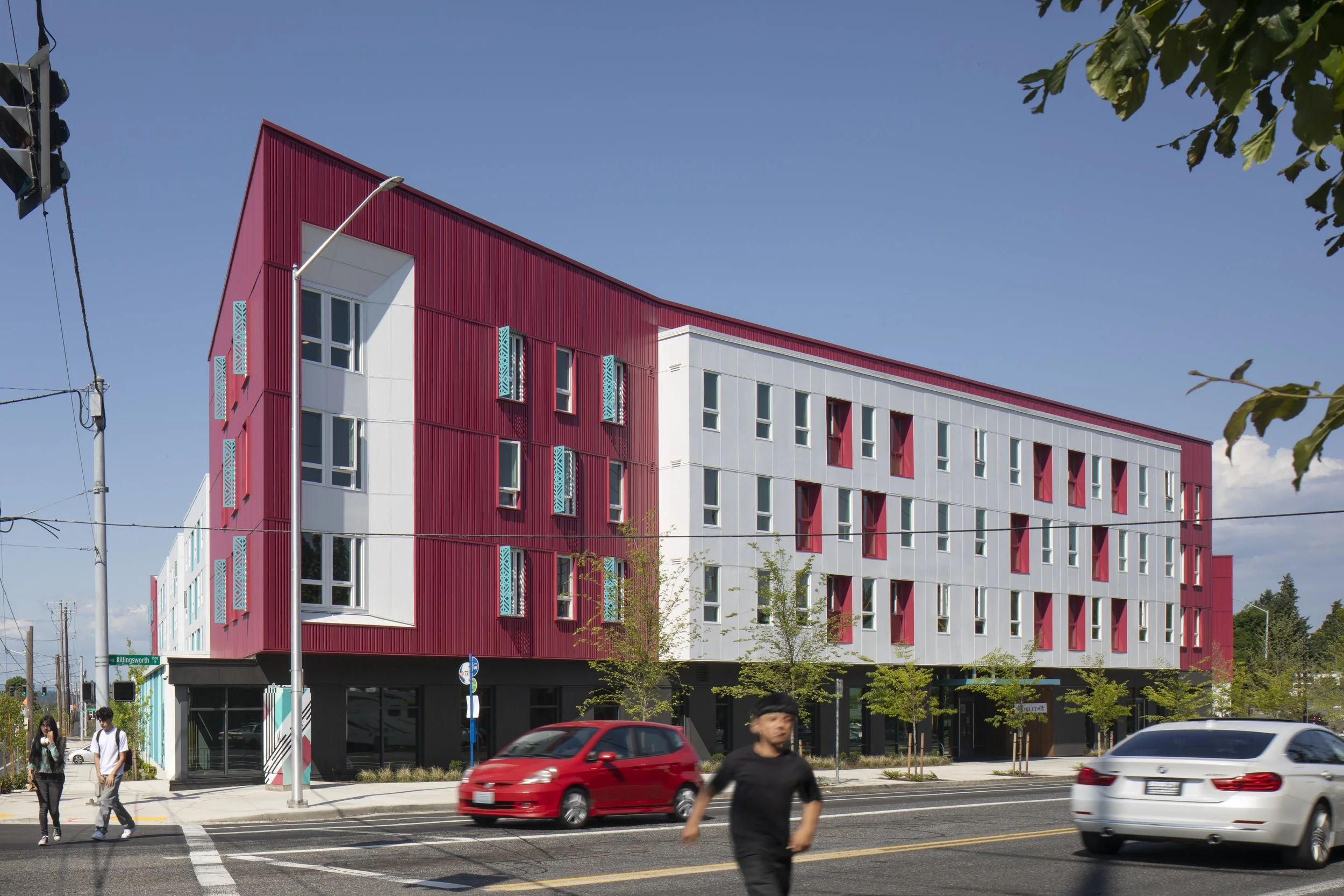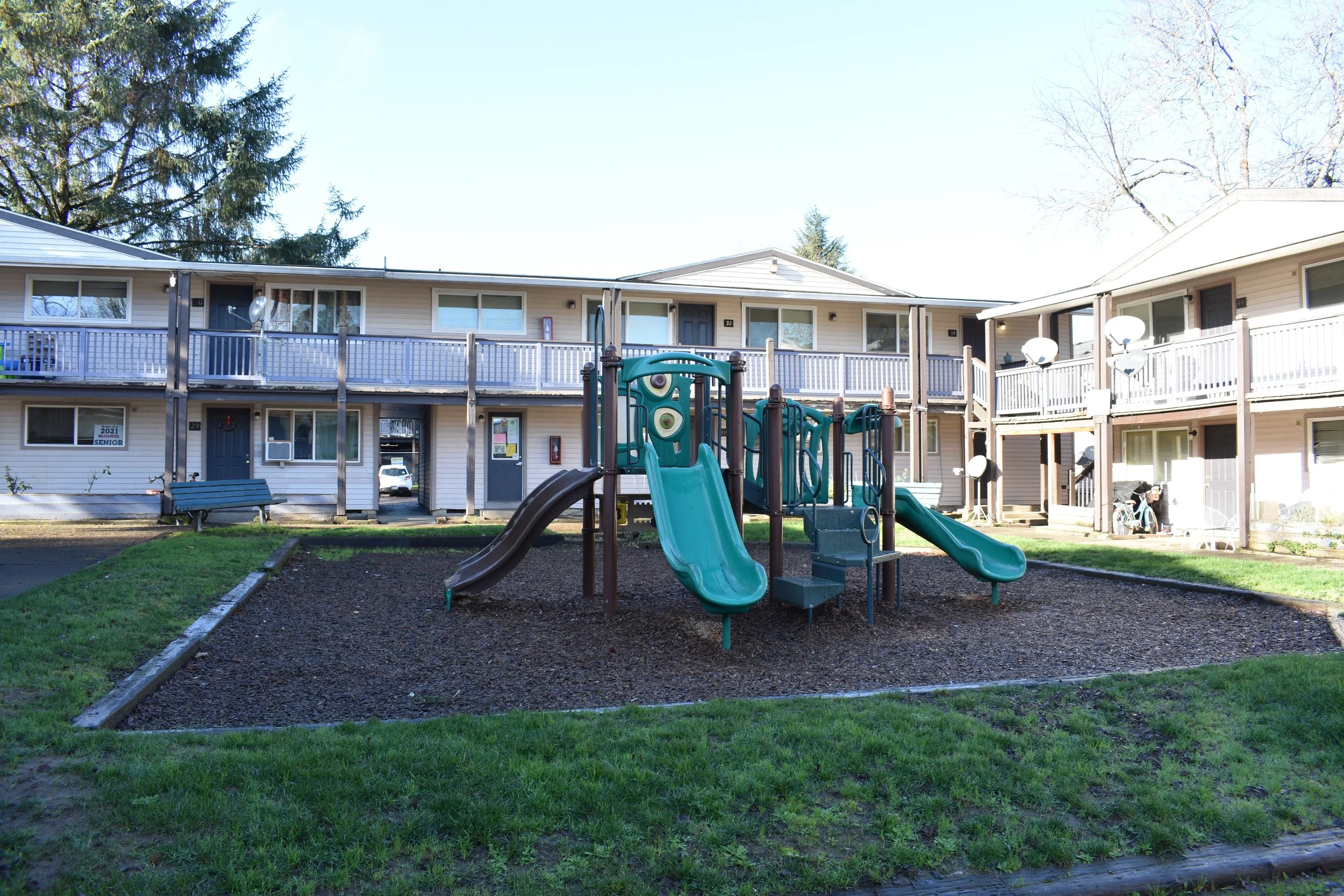Hacienda CDC: A Story of Community and Resilience
Hacienda’s co-founders and our CEO, Ernesto Fonseca share the rich history behind our mission and culture within the Cully Neighborhood.
by Ernesto Fonseca, Clara Padilla & Maria rojo de steffey
_______
Hacienda Community Development Corporation (Hacienda CDC) is a cornerstone of the vibrant Cully neighborhood in Portland, OR. From its founding, the visionary leadership at Hacienda has made a lasting impact on the neighborhood, helping transform it into a thriving, family-oriented community.
The Cully neighborhood was named after Thomas Cully, who settled in the area in 1847. For much of its history, it remained unincorporated, only becoming part of Portland in 1985.
For decades, Cully lacked essential infrastructure like sidewalks, lighting, and sewer systems. During the 1950s and 1960s, developers took advantage of cheap land and minimal regulation, building modest multifamily projects throughout the area. By the mid-1980s, when annexation into Portland finally came, many of these apartments had fallen into despair. Absentee landlords, focused on profits, ignored upkeep and basic occupancy standards. While this neglect created unsafe conditions, it also made the apartments affordable to low-income families, predominantly Latino, Black, and White working-class households who, despite the challenges, made Cully their home because rents were lower than elsewhere. Yet as a newly annexed neighborhood, Cully was overlooked by city planners and policymakers.
With the advocacy of Hacienda’s early board, issues of crime, neglect, and disinvestment began to draw attention and investment. Over time, this persistence became a reality. Today, Cully stands as an inspiring example of what sustained advocacy can do. Hacienda’s efforts have not only secured resources but also strengthened social bonds, empowering neighbors to support one another and shape their own future. Cully remains Oregon’s most diverse neighborhood, a rich cultural tapestry, while continuing to grapple with longstanding infrastructure challenges, including unpaved streets and missing sidewalks.
When Hacienda acquired its first properties in the early 1990s, complexes like Cully Manor and Galaxy Apartments had already become home to many Latino families. At the same time, the infamous Sugar Shack, a strip club on the corner of Cully Boulevard and Killingsworth Street. The club was allegedly a hub for illicit activity, from drug dealing to human trafficking, and became a magnet for police calls. Its presence created an atmosphere of crime and insecurity, undermining the safety of nearby families. For decades, Hacienda sought to acquire the site, finally succeeding in 2017. A few years later, in 2022, it was redeveloped into Las Adelitas.
As Hacienda began advocating for change, families living in Cully Manor, Townhouse Apartments, Wendorf Apartments, and Galaxy Apartments faced unsafe conditions. Children couldn’t even play outside without fear.
Recognizing this, Clara Padilia Andrews, former New Mexico Secretary of State, a well-experienced organizer and then assistant to Multnomah County Chair Gladys McCoy, brought her deep experience in community organizing to Cully in the late 1980s. She partnered with Maria Rojo de Steffey, who would later serve as Multnomah County Commissioner, to push for city, county, and state intervention to purchase the troubled complexes. Baltazar Ortiz (Buz Ortiz) and Dan Steffey were tasked with locating the owner and slumlord of these apartments and traveled to California to negotiate the purchase of these complexes. When the apartments were finally secured, Founding Board Chair Buz Ortiz named the newly combined apartments Villa de Clara Vista in honor of Clara’s vision, work, and unwavering commitment to building a better future for Latino families.
Villa de Clara Vista
Their efforts made it clear that a new nonprofit was needed to lead this transformation; The path to forming a 501(c)(3) was long and complicated. Clara and Maria identified an exciting but dormant non-profit, the Northwest Voter Registration and Education Project, founded in 1986 by William Weisman. With Weisman’s support, the organization was renamed the Northwest Community Project in 1988, initially led by Luz Gutierrez as president, followed by Ramona Soto Rank. This name was again changed in the 1990s.
By the early 1990s, Clara’s vision of a strong, community-driven nonprofit was taking place. Alongside Maria, she again recruited Baltazar “Buz” Ortiz to help restructure the organization. On July 8th, 1992, the trio officially submitted the paperwork to establish Hacienda Community Development Corporation. Ortiz became Board Chair, with Maria serving as Vice Chair. The Founding board and its supporters included dedicated community leaders such as Baltazar, Melanie Daivs, Dan Lucero, Mary Lucero, Gilbert Rodriguez, Roslind Rodriguez, Urbano Torres, Frank Soto, Lina Garcia Seabold, Bertha Ferran, Luis Ornelas, and Rodolpho Pedraza Baldwin. At the time, no Executive Director was hired, and all the board members and administrators were unpaid.
The hundreds of families who now live in Hacienda’s communities rely on its essential services and are the direct beneficiaries of these leaders’ dedication, vision, and belief in building a stronger, safer community for all.
###




